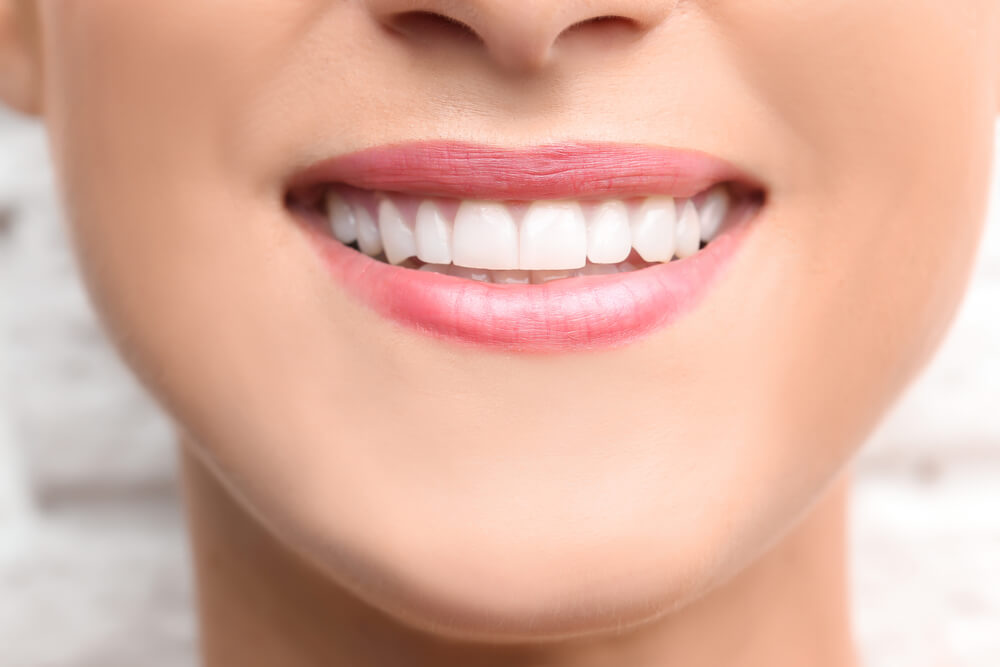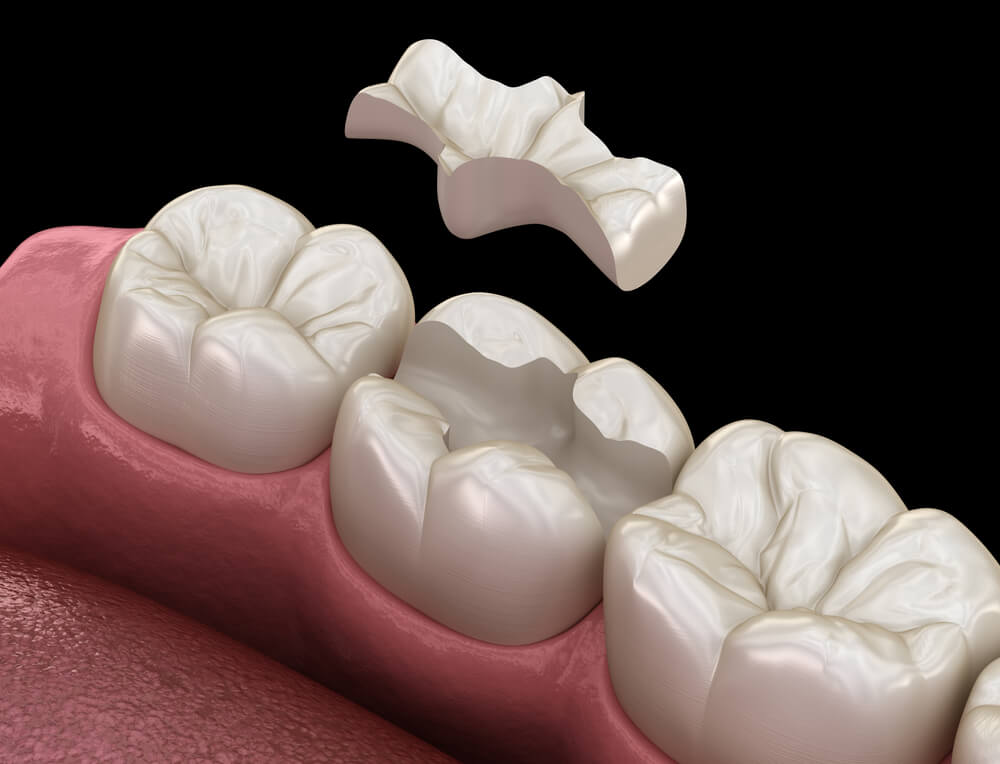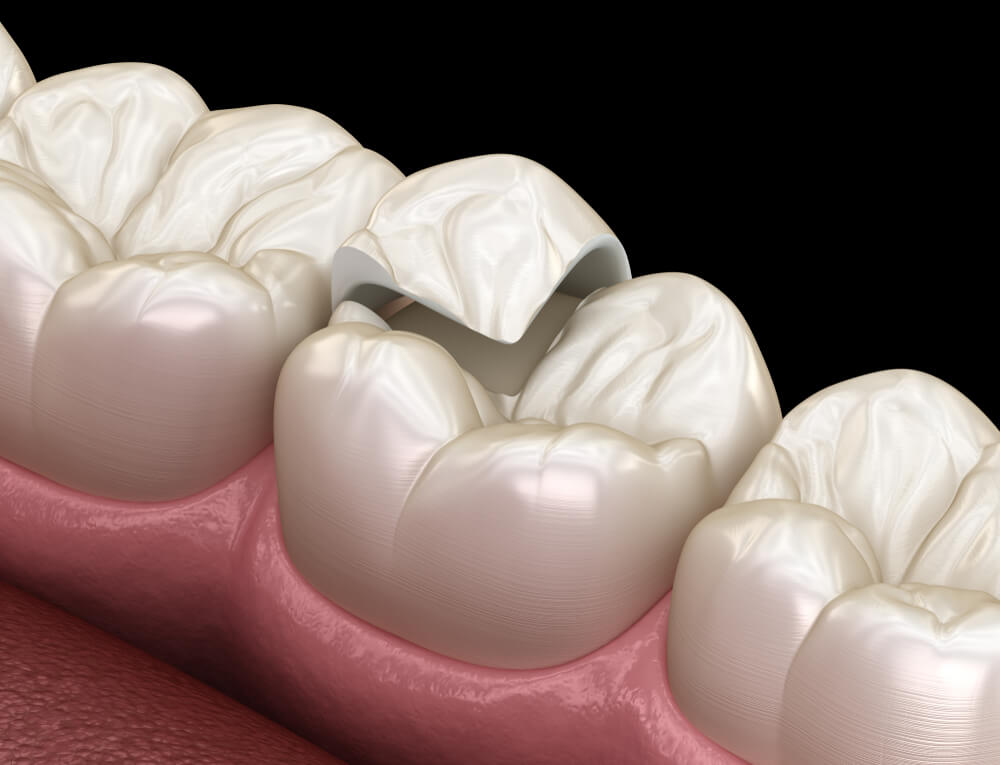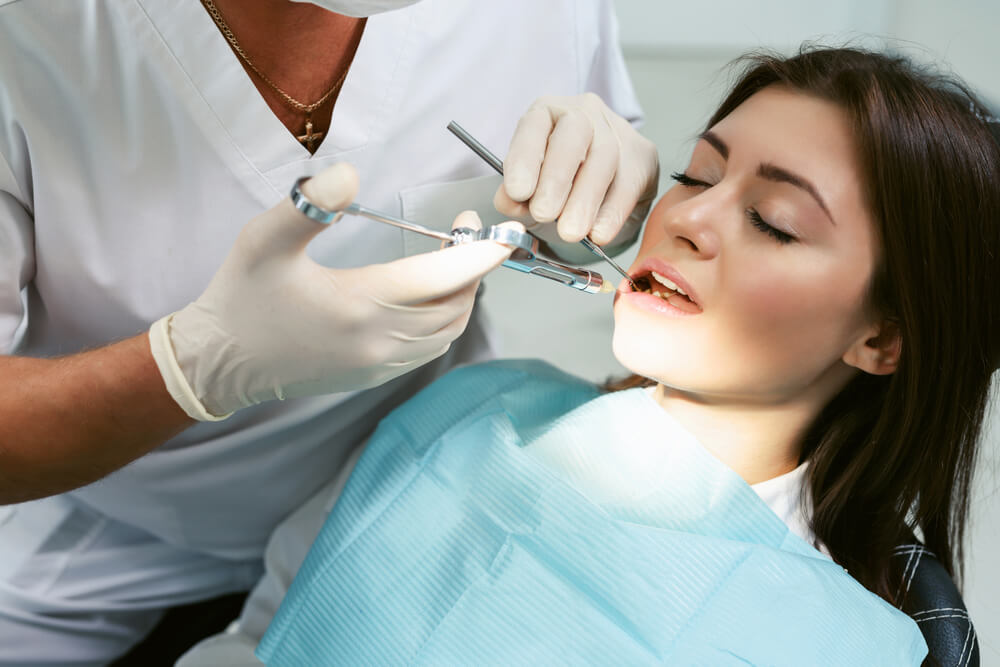When a tooth develops a cavity, it is usually treated with a dental filling. If it becomes damaged as a result of trauma or injury, a crown may be fitted to restore looks and function to it. There are cases, however, when the damage falls in between these situations – where it is more serious than what a filling can fix but not serious enough to have a crown placed. At those times, the solution may be dental inlays and onlays. These restorations are custom-made and are bonded to the affected tooth (or teeth) to treat the damaged tooth. Your dentist can assess the damage and make the best recommendation.


Inlays and onlays offer several benefits as a dental treatment. They both:
Inlays are used when the damage to a tooth occurs between the cusp tips (in the center of the tooth). Today, they are usually made of tooth-colored materials such as ceramic, porcelain, or composite to produce a more natural-looking appearance.
To place a dental inlay, your dentist will first remove the decay from the tooth, then clean it. An impression will be taken of the tooth and sent to a dental lab where the inlay will be created. A temporary covering will be placed on the prepared tooth to protect it until the inlay returns from the dental lab. Once it has been completed, the permanent inlay will be bonded to the prepared tooth during a separate appointment.


Onlays are created and placed in the same way as dental inlays – the decay will be removed, and the onlay will be created using an impression taken of the tooth. The difference is that they are used when the cusp (edge) of a tooth is damaged, or if multiple teeth are affected.
Inlays and onlays are strong and can last for years with good maintenance. They do not require any more care than the natural teeth, which means diligent brushing and flossing, along with regular visits to the dentist.
The procedure for injecting a dermal filler usually takes 20 to 40 minutes. The amount of filler used will depend on the level of volume loss as well as the areas that are being treated. A very fine needle is used to administer the filler to reduce bruising. Results will be visible immediately after treatment is complete. The procedure is very safe and non-invasive, but may result in some bruising and swelling following the injection. However, these effects should pass fairly quickly.

We will be glad to file a predetermination for you to verify coverage of any necessary dental treatment. We accept most PPO insurances. Don’t be discouraged if you don’t have dental insurance. We have a dental membership plan that is an excellent alternative to dental insurance. Our membership plan has an affordable annual fee that offers a discount on all your preventative care program.




